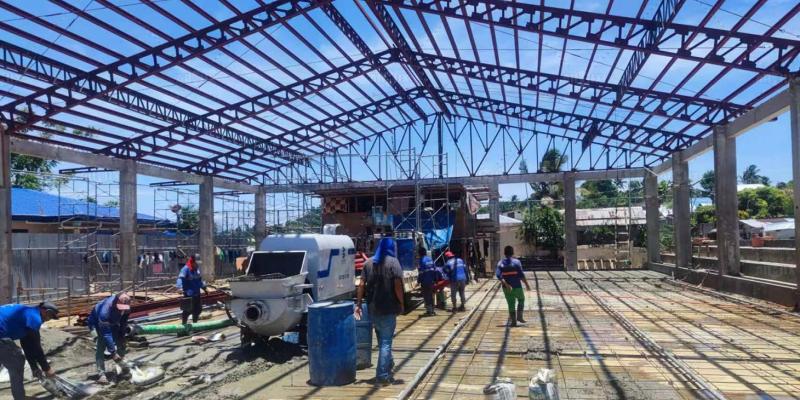Is It Wise to Invest into A Concrete Pump Stationary for Villa Construction

Villa construction, by its very nature, demands a blend of aesthetic sophistication and structural durability. As these projects become increasingly bespoke, so too does the need for specialized equipment. One such consideration is whether investing in a stationary pumpcrete is a prudent decision. This machine, known for delivering high volumes of concrete efficiently and with precision, seems an attractive option. Yet, the question remains: is it truly the best investment for villa projects, which often require precision over sheer volume? A deeper exploration of its advantages and limitations may offer some clarity on this matter.
Advantages of Stationary Concrete Pumps
Precision and Control in Concrete Placement
When constructing villas, every structural element must be executed with meticulous accuracy. The stationary concrete pump offers unparalleled control over concrete placement, allowing builders to deliver the mix exactly where it’s needed, with minimal waste or spillage. This is especially advantageous in the creation of complex architectural elements, where traditional pouring methods may lead to inconsistencies. By using a stationary pump, builders can achieve a uniform distribution, reducing the likelihood of structural weaknesses.Increased Efficiency and Time-Saving
Time is an essential currency in construction, and any method that accelerates project completion without sacrificing quality is worth considering. Stationary concrete pumps are designed to expedite the pouring process by continuously delivering concrete to the designated areas. This eliminates the need for constant repositioning or manual labor associated with traditional pouring methods. For villa projects, which often require multiple concrete applications in different sections of the build, this time-saving feature can lead to faster completion and reduced labor costs, increasing profitability.
Challenges of Stationary Concrete Pumps
Initial Investment and Maintenance Costs
One of the most significant considerations in any equipment purchase is the initial cost. Stationary concrete pumps are not cheap. Their upfront expense can be a significant burden for smaller construction firms or independent builders. Additionally, they require regular maintenance to keep operating at peak efficiency. The cost of repairs, spare parts, and technical support must be factored into the total cost of ownership. For villa projects, where the demand for concrete may not be as high as in larger commercial builds, the investment in such a machine may not yield immediate returns.Space and Logistical Constraints
Villas, often built on smaller plots of land compared to large commercial structures, can present logistical challenges for stationary pump setup. These machines require a designated area for installation and operation, which may be hard to allocate on tight construction sites. Furthermore, setting up a pump concrete can take time and requires skilled personnel to ensure it is positioned correctly for optimal efficiency. In cases where space is at a premium, or where the project involves multiple locations, this machinery may pose more of a hindrance than a benefit.Evaluating the Long-Term Impact
Scalability and Future Projects
While the investment in a stationary concrete pump may seem steep for a single villa project, its scalability across multiple projects is where its value truly shines. If a construction company specializes in villa development or plans to expand into larger residential or commercial projects, the equipment will likely pay for itself over time. The ability to handle multiple pours efficiently across several sites makes the stationary pump an asset in the long term, particularly for companies looking to scale operations.
Improved Quality and Client Satisfaction
One undeniable benefit of using stationary pumps is the enhanced quality of the finished concrete work. With greater precision and consistency, builders can produce higher-quality structures, reducing the risk of defects or rework. For villa construction, where the finished product is often a significant financial investment for clients, ensuring top-tier construction quality is paramount. This leads to greater client satisfaction, repeat business, and a strong reputation in the high-end residential construction market.Post Your Ad Here